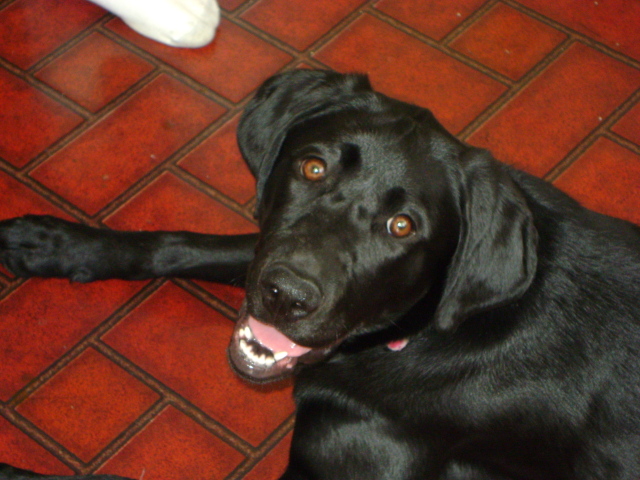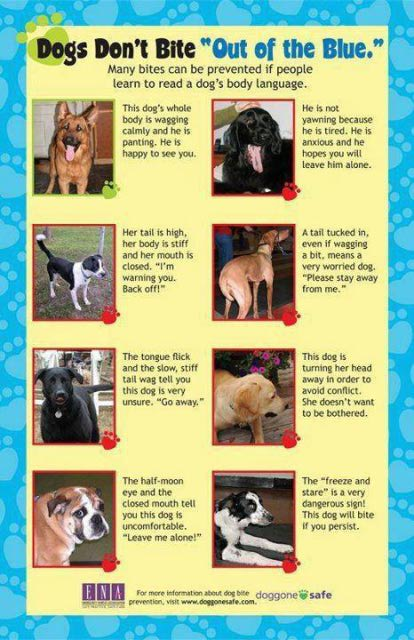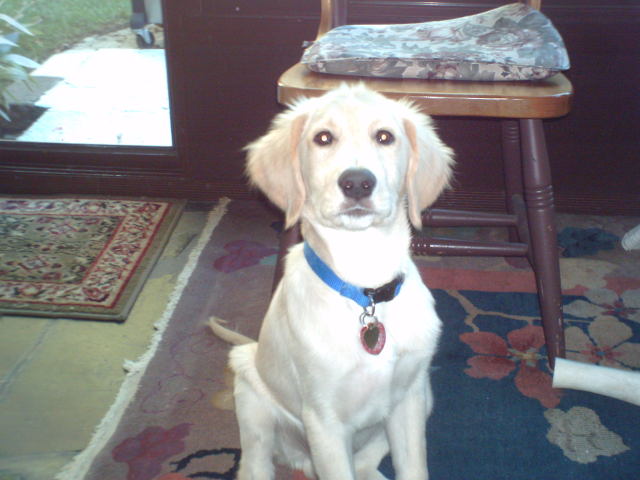QuestionHello!!
I am currently having a problem with my 7 year old golden retriever. His name is Goldman. Usually he is a happy, healthy, and very active dog. We have a pool in our backyard, and unfortunately, our cocker spaniel drowned in it. She was very old (16),she was almost blind and didn't see the pool, and fell in. Goldman witnessed this. Now when we swim in the pool Goldman exhibits signs of anxiety and fear. He hides in the bedroom and refuses to come outside. He pants a lot and seems hot although the air conditioner is on, he has plenty of water, and it is not hot inside. Afterwards he is not his usual energetic self. I think he is traumatized by our other dogs death. What can I do to calm him and help him come to terms with the pool?
AnswerPoor Goldman must have smelled and heard (as well as seen) the terror of your Cocker Spaniel. This is a very strong conditioned response and I'm assuming it's recent. How you approach this situation now will affect whether or not time will lessen the effect of this incident. Find a room in your home facing another direction from that of the pool. Habituate Goldman to spending some time alone in this room during each day. Give him special toys, leave the TV or radio on, give him a special treat when you put him in there and one when you let him out. After several days, he will happily go to his special place, and this is where he should be confined (for now) when you use the pool. Luckily, the swimming season is coming to an end. You can spend the winter attempting to rehabilitate Goldman's automatic physiological response to the sight/sound of the pool. Take him on leash toward the pool but WATCH him VERY closely for signs of fear. If you can get within five feet of it before he shows fear (or whatever distance, even over the threshold of the back door), STOP there. Ask him for a simple behavior (such as "sit") and praise/reward lavishly, then return inside. Use that distance as a marker. Return to it the next day, repeat the above. The day following, attempt another foot or two, but OBSERVE the dog carefully (as you do NOT want to reward fear.) Slowly (impossible to say how slowly, some dogs rehabilitate very quickly and others do not) you should be able to get closer to the pool and then right up to it. Don't be in a rush; you have the entire winter. Your goal is for your dog to be relaxed and anticipating a simple "command" and a great deal of praise and a wonderful reward. Once he is happy to accompany you and demonstrates no anxiety, associate other good things with being around the pool. The physiological reaction to a traumatic event is the conditioned response; rehabilitating that reaction will solve the problem.

 Black lab - 1 yr
QuestionSheba
QUESTION: My lab loves to bite her
Black lab - 1 yr
QuestionSheba
QUESTION: My lab loves to bite her
 Companion for Lonley Westie
Question
Shannon
We have a 5-year-old neutered Westie w
Companion for Lonley Westie
Question
Shannon
We have a 5-year-old neutered Westie w
 uncontrollable beagle
Question
max
My beagle is a year and a half. Ive had hi
uncontrollable beagle
Question
max
My beagle is a year and a half. Ive had hi
 Is this aggression, dominance, or play?
QuestionQUESTION: I have a question regarding doggy beh
Is this aggression, dominance, or play?
QuestionQUESTION: I have a question regarding doggy beh
 my 7 month old golden changed for the worse
QuestionRiley at 6 months
QUESTION: I got a gold
my 7 month old golden changed for the worse
QuestionRiley at 6 months
QUESTION: I got a gold